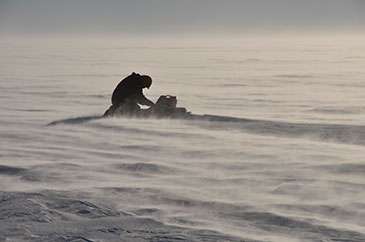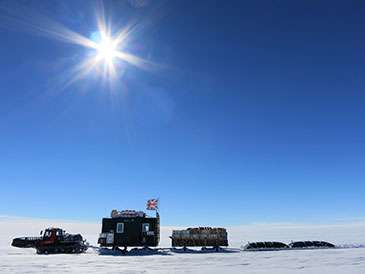First leg of Antarctic iSTAR mission accomplished

The iSTAR science programme brings together multi-disciplinary teams to investigate ice loss from Pine Island Glacier, the biggest single contributor to worldwide sea level rise. The next step of the programme, an ocean investigation, is now underway.
Launched last November, iSTAR is an ambitious scientific programme, funded by the Natural Environment Research Council (NERC), uniting leading scientists from 11 UK universities and from British Antarctic Survey (BAS). Using state-of-the-art technologies to measure changes to the flow and thickness of glaciers, and to investigate the role that the ocean plays in transporting warm water beneath ice shelves, this multi-disciplinary mission is the first of its kind for the UK.
Scientists recognise the urgent need to understand the causes and impact of recent rapid ice loss from Pine Island Glacier. The impact on global sea-level rise could be significant – this mission is designed to find out just how significant. This new knowledge about its stability is critical for making better predictions about how the ocean and ice will respond to future environmental change.
The team travelled 1,500km (932 miles) by 'tractor train' across the glacier ice, taking samples and measurements as they went. This is the first time in recent British history that this method of crossing the ice has been undertaken. Sophisticated equipment, supplies and fuel were loaded on to specially designed rubber mats and towed by huge tractors. A 'caboose' (a caravan-like office and living space) housed technical equipment and provided a warm space for the science team to plan their days' work.

Programme lead Dr Andy Smith from British Antarctic Survey said: "The ice-traverse has been a huge success. We visited all the proposed sites on the route, conducted considerably more experiments than had been originally planned and completed much quicker than expected. Our success has been thanks to the excellent support we have received, the sheer hard work and dedication of all the traverse members and some good luck with the weather. We are very pleased to have successfully completed this year's deep-field work."
This next leg of the mission will focus on retrieving moorings, tagging seals, and performing further measurements using an Autosub (autonomous submarine) operated by the National Oceanography Centre (NOC), ocean gliders, and onboard instrumentation to analyse how much the ocean is contributing to the retreat of Pine Island Glacier from below the ice shelf. The ship will be deployed in Pine Island Bay until early March.
Provided by University of Bristol




















